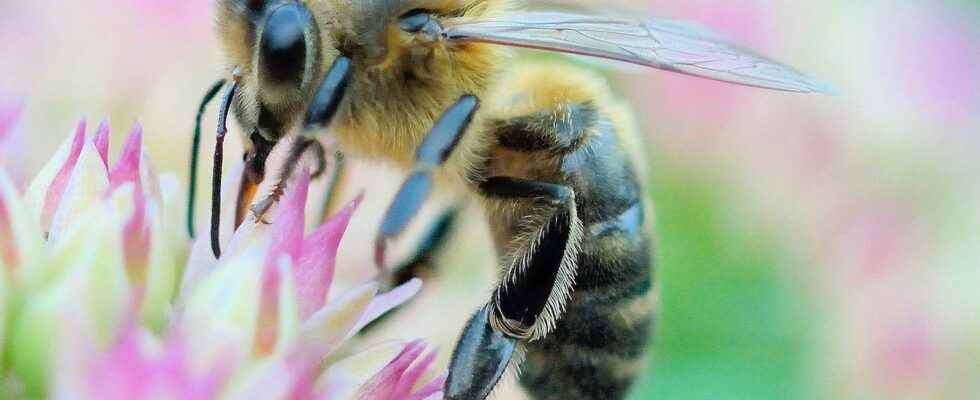The difference between a honeybee and a wasp is, in particular, that the first — unlike the second — can only sting once. It’s all just about anatomy. It is the shape of the bee’s stinger that will deliver the fatal blow.
You will also be interested
[EN VIDÉO] How do bees make honey? Honey is one of the oldest ways to sweeten food. It is virtually imperishable and it takes a lot of bee work to make. Unisciel and the University of Lille 1 explain to us, with the Kézako program, the stages of its manufacture.
The honey bees are not aggressive in nature. If this social insect happens to sting, it is always in the interest of the colony and only to defend its territory, its hive and its queen. The bee having no awareness of its own life or the risks it incurs by stinging, it is without any restraint that it sacrifices itself for the benefit of the hive.
Only female bees sting
It should be noted that only bees females can sting. The male bee, known as drone, does not have a stinger and therefore cannot sting. The queens, on the other hand, limit themselves to biting small animals that venture into the hive, or possibly rivals. The same queen can sting several times without dying.
A spur sting responsible for the death of the bee
If the bees — the worker bees only finally — die after having stung, it is because their stinger takes the form of a harpoon (whereas that of the wasps is very smooth). When it sinks into our skin — and that of other vertebrates — our flesh literally closes in on it and the hooks of the harpoon then prevent it from coming out.
To escape, the bee is then forced to leave behind part of its abdomen containing the gland to venom. Gutted, the bee is therefore condemned to die in the more or less short term, and we, to try to relieve the sting as much as possible.
Interested in what you just read?
